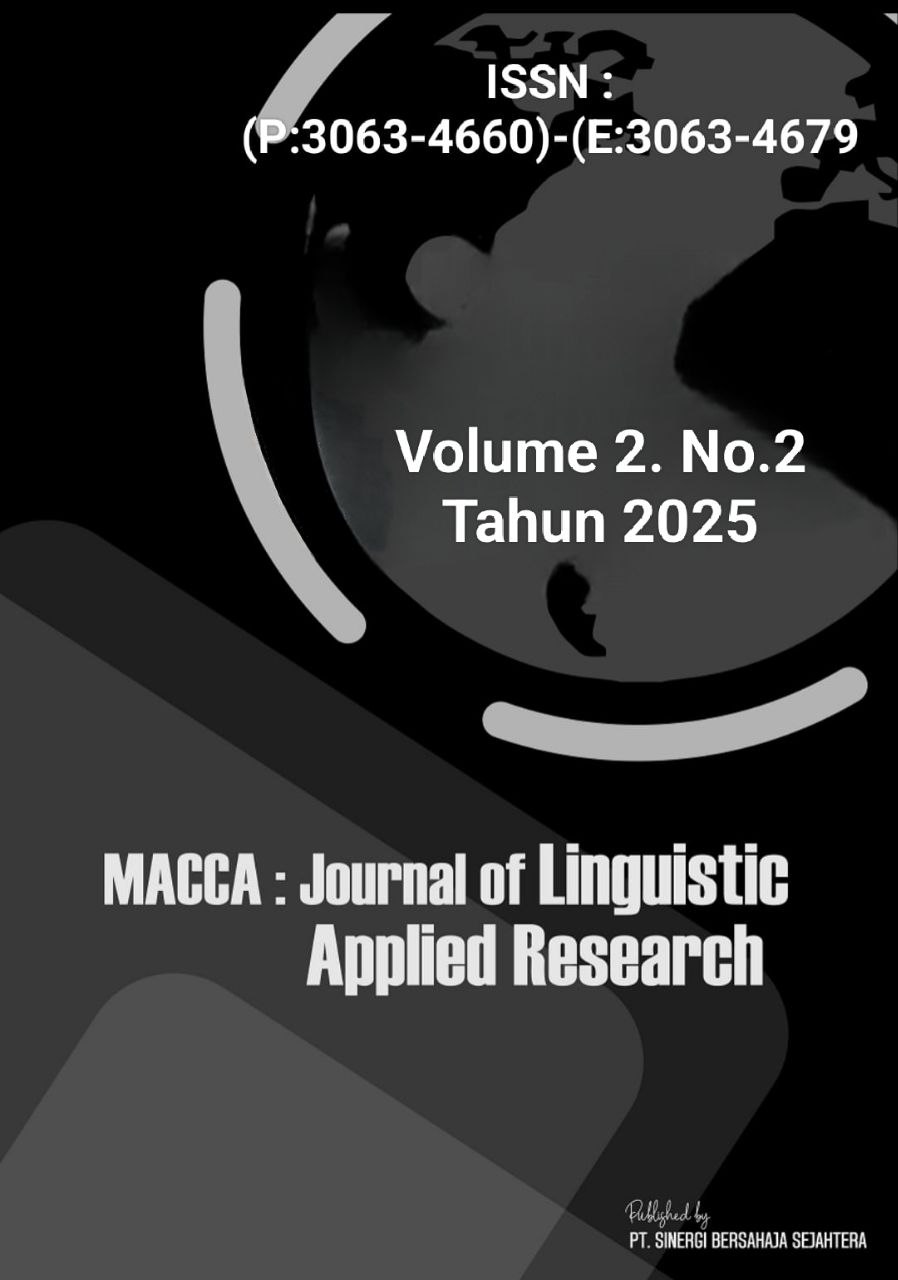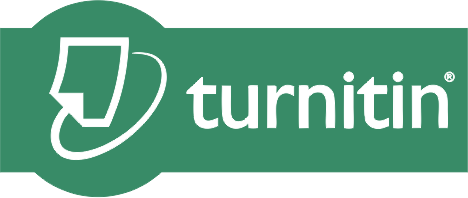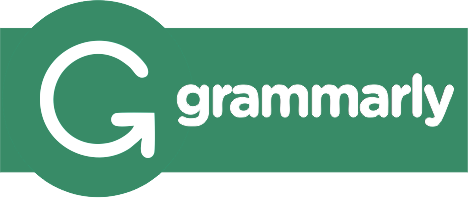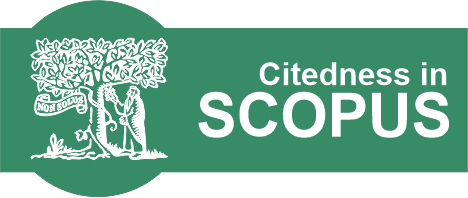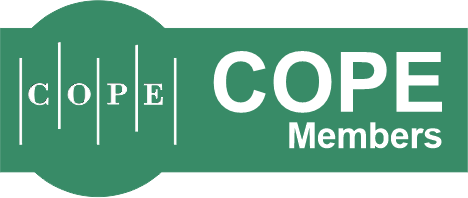Analyzing Of The Use ELSA Speak Application With A Video Tutorial Approach Among Generation Z Students
Keywords:
: ELSA Speak, video tutorial, English speaking skills, Mobile-Assisted Language Learning, Generation Z.Abstract
This study examines the perceptions of second-semester students in the English Education Study Program at Universitas Muhammadiyah Sidenreng Rappang regarding the use of the ELSA Speak application to develop English speaking skills through a video tutorial approach. The research focuses on three main points: students’ understanding of the app’s features, their readiness to operate it, and the effect on their confidence in speaking English in academic and everyday contexts.
A qualitative descriptive design was used, with data gathered through semi-structured interviews and direct observations of students while engaging with the application. The data were analyzed thematically to identify patterns in accessibility, feature usage, motivation to learn, and changes in speaking performance.
The results show that most participants found the video tutorial highly effective in helping them navigate and use ELSA Speak. It delivered clear, step-by-step guidance, particularly on essential features such as pronunciation assessment, intonation correction, and AI-based speaking tasks. Many students noted a significant boost in their speaking confidence after regular practice. However, some challenges remained, including speaking anxiety, difficulties in managing practice time, and dependence on stable internet connectivity. integrating ELSA Speak with structured video tutorials can be a relevant and adaptive learning tool, especially for Generation Z learners who are familiar with digital technology. This approach aligns with Mobile-Assisted Language Learning (MALL) principles by providing flexible, interactive, and personalized learning experiences. The findings are expected to offer valuable insights for educators, application developers, and curriculum designers in optimizing technology-based strategies to meet learners’ needs and habits.
References
Abdul Jalil Jum’uatullaila, Buhari, Syahrir L, & Sam Hermansyah. (2025). The Influences of Using Quizizz in Student’s English Learning Outcomes. INTERACTION: Jurnal Pendidikan Bahasa, 12(1), 1030–1040. https://doi.org/10.36232/interactionjournal.v12i1.3526
Akhmad, N. W., & Munawir, A. (2022). Improving the students' pronunciation ability by using ELSA Speak app. IDEAS: Journal on English Language Teaching and Learning, Linguistics and Literature, 10(1), 846–857.
Al-Madhagy, G., Hail, T., Yusof, S. A. M., Rashid, A., & El-Shekeil, I. (2024). Exploring factors influencing Gen Z's acceptance and adoption of AI and cloud-based applications and tools in academic attainment. Emerging Science Journal, 8(3), 1–15.
Becker, K., & Edalatishams, I. (2019). Technology review: ELSA Speak accent reduction. A Journal of Conference in Second Language Learning and Teaching, 2380-9566, 1–5.
Brown, H. D. (2004). Language assessment: Principles and classroom practices (p. 56). Pearson Education.
Dalilah, & Syah. (2022). Tantangan mahasiswa Indonesia dalam mempelajari bahasa Inggris: Kosa kata, pengucapan, dan motivasi. Jurnal Pendidikan Bahasa Inggris Indonesia, 10(2), 45–56.
Denzin, N. K., & Lincoln, Y. S. (2005). The SAGE Handbook of Qualitative Research (3rd ed.). SAGE Publications
Gee, J. P. (2017). The role of interactive learning technologies in personalized education. Journal of Educational Technology Research, 34(2), 112–126.
Harmer, J. (2001). The practice of English language teaching (3rd ed., p. 45). Pearson Education.
Hattie, J., & Timperley, H. (2007). The power of feedback. Review of Educational Research, 77(1), 81–112.
Heick, T. (2018). How technology supported personalized learning: The role of AI-based applications like ELSA Speak. Journal of Educational Innovation, 12(3), 45–58.
Hidayati, T. (2021). Teaching pronunciation through MALL: Promoting EFL learners' pronunciation and their learning autonomy. Journal of English Language Teaching and Linguistics, 6(1), 123–135.
Hoang, T. T. H., Pham, T. T. H., & Nguyen, T. T. H. (2020). The effects of using ELSA Speak app on the enhancement of college students' English-speaking skills. International Journal of English Linguistics, 10(6), 20–28.
Iriance. (2018). Bahasa Inggris sebagai bahasa lingua franca dan posisi kemampuan bahasa Inggris masyarakat Indonesia diantara anggota MEA. Prosiding Industrial Research Workshop and National Seminar, 9, 776–783.
Jayanti, J. (2023). The effectiveness of ELSA Speak application to improve students' pronunciation ability at SMPN 1 Tandukkalua (Undergraduate thesis, Universitas Sulawesi Barat).
Jimmy Cromico, & Sam Hermansyah. (2025). An Analysis of Factors Affecting EFL Learners’ Reading Strategy Use. INTERACTION: Jurnal Pendidikan Bahasa, 12(1), 1009–1017. https://doi.org/10.36232/interactionjournal.v12i1.3462
Johnson, A., Smith, B., & Williams, C. (2016). The impact of technology on independent language learning. Journal of Educational Technology, 12(3), 45–60.
Junco, R. (2012). The relationship between frequency of Facebook use, participation in Facebook activities, and student engagement. Computers & Education, 58(1), 162–171.
Kholis, N. (2021). The use of ELSA Speak application to improve English pronunciation skills. ELTECHO: Journal of English Language Teaching and Technology, 1(2), 123–134.
Kothari, C. R. (2004). Research Methodology: Methods and Techniques (2nd ed.). New Age International Publishers.
Mahadin. (2020). Peran keterampilan berbicara dalam interaksi komunikatif. Jurnal Komunikasi dan Bahasa, 8(1), 45–52.
Mahardhika, A. (2019). The effect of teaching technique and self-confidence toward students’ speaking skill. International Journal of Language Education and Cultural Review, 5(2), 180–186.
Maulida, E. F. (2021). Students' English speaking anxiety: Levels and causes. The Journal of English Language Studies, 1(1), 25–34.
Mayer, R. E. (2005). Cognitive theory of multimedia learning. In R. E. Mayer (Ed.), The Cambridge Handbook of Multimedia Learning (pp. 31–48). New York: Cambridge University Press.
Miskam, N. A., & Saidalvi, A. (2019). The use of ELSA Speak application to improve English pronunciation among TESL students. Creative Practices in Language Learning and Teaching (CPLT), 7(1), 29–39.
Moleong, L. J. (2017). Metodologi Penelitian Kualitatif (Edisi Revisi, Cetakan ke-36). Bandung: PT Remaja Rosdakarya.
Nur Sadriana Syahrir, Syamsu T, Nurul Faradillah, & Sam Hermansyah. (2025). Exploring the Effectiveness of Personal Vocabulary Note in Enhancing English Vocabulary Mastery at SMPN 1 Baranti. INTERACTION: Jurnal Pendidikan Bahasa, 12(1), 1126–1134. https://doi.org/10.36232/interactionjournal.v12i1.3846
Samad, I. S., & Ismail, I. (2020). ELSA Speak application as a supporting media in enhancing students’ pronunciation skill. MAJESTY Journal, 2(2), 1–7.
Sam Hermansyah, & Ahmad Rizal Majid. (2025). The Use of Probing-Prompting Technique to Improve Reading Comprehension of Eighth Grade Students. INTERACTION: Jurnal Pendidikan Bahasa, 12(1), 543–556. https://doi.org/10.36232/interactionjournal.v12i1.2660
Seemiller, C., & Grace, M. (2016). Generation Z goes to college. Jossey-Bass.
Suhantono. (2021). Generasi Z dalam dunia pendidikan. Jurnal Manajemen Informatika dan Aplikasinya, 2(1), 331–334.
Sugiyono. (2015). Metode penelitian pendidikan: Pendekatan kuantitatif, kualitatif, dan R&D (Edisi ke-18). Alfabeta.
Sukiman. (2016). Pengembangan Media Pembelajaran. Yogyakarta: Pedagogia.
Yuliana, E. (2021). Students' perceptions on the use of ELSA Speak application to improve English speaking skills. Journal of English Language Teaching and Linguistics, 6(1), 123–135.
Solchan, T., Sumarti, S. S., & Wahyuni, S. (2014). Improving students' speaking skill and self-confidence using retelling of fifth grade students. Advances in Social Science, Education and Humanities Research, 326, 489. Atlantis Press.
Tarigan, H. G. (1997). Berbicara sebagai suatu keterampilan berbahasa. Bandung: Angkasa.
Tarigan, H. G. (2008). Berbicara sebagai suatu keterampilan berbahasa (edisi revisi). Bandung: Angkasa.
Thornbury, S. (2005). How to teach grammar (p. 89). Pearson Education.
Richards, J. C. (2008). Teaching listening and speaking: From theory to practice (p. 112). Cambridge University Press.
Downloads
Published
How to Cite
Issue
Section
License
Copyright (c) 2025 Megawati, Sam Hermansyah, Syahrir L, Sitti Aisa

This work is licensed under a Creative Commons Attribution-ShareAlike 4.0 International License.

